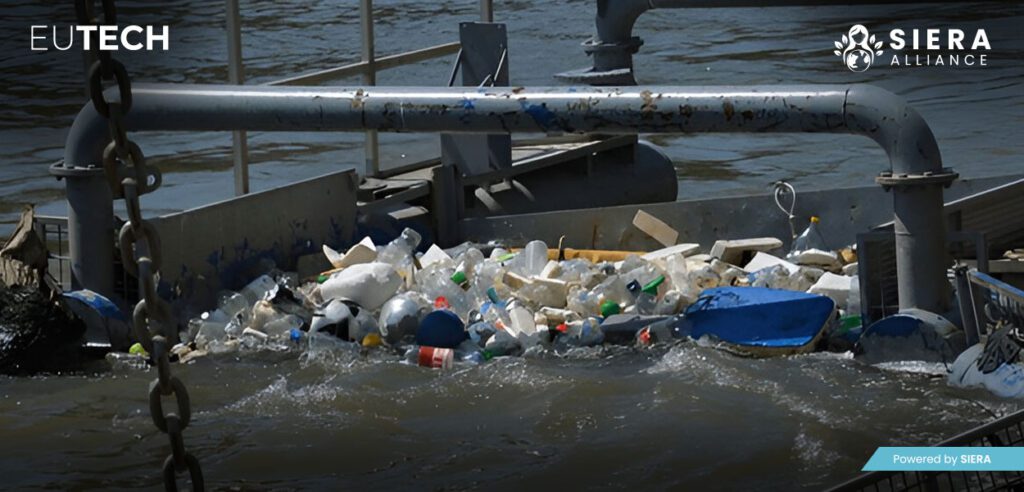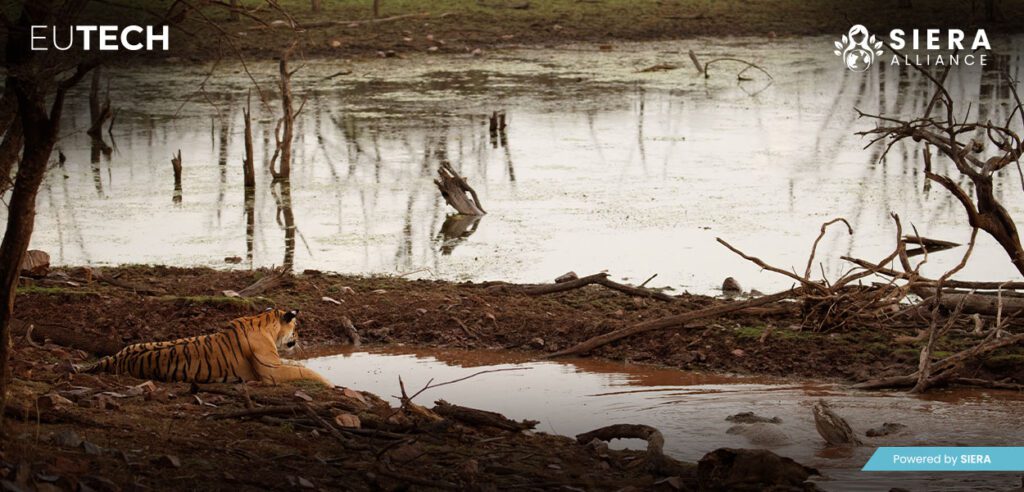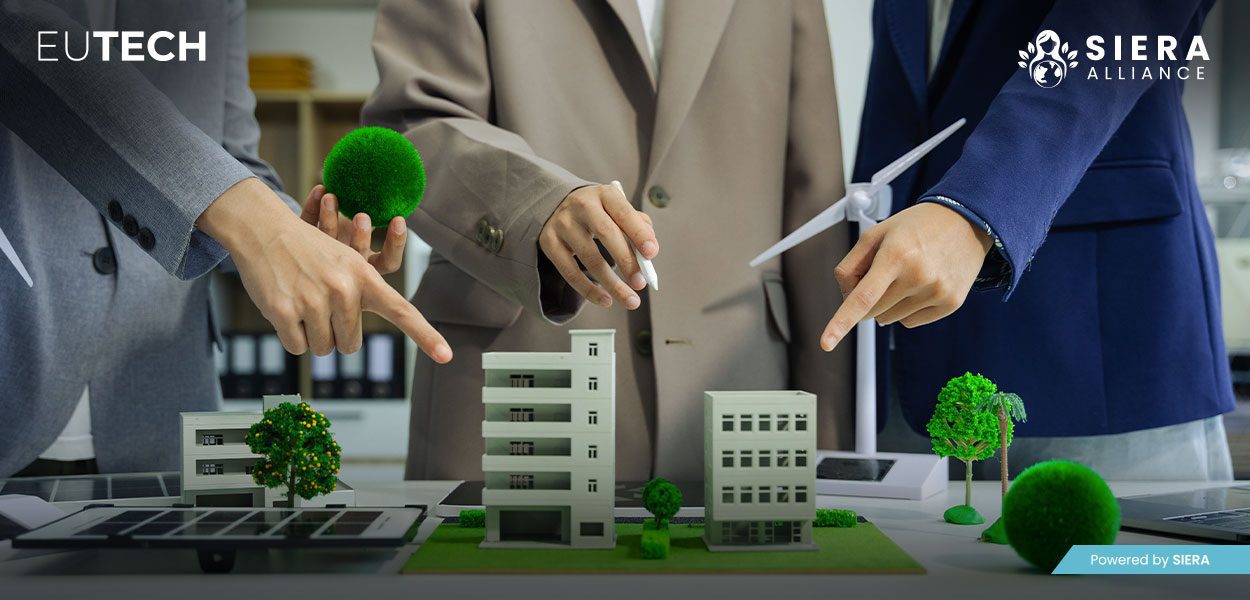On 4th February 2025, the EUTECH – Construction Council powered by SIERA Alliance hosted an insightful webinar titled “Mitigating the Impact of Construction on Biodiversity and Ecosystems.” Moderated by Melanie Klettl, this session explored the urgent need for sustainable practices within the construction industry to reduce its environmental footprint and ensure compliance with ESRS E4 standards. The event featured Dr. Najoua Zhar, Research Associate at AUB, and Yann Teste, Vice President of Purchasing at Volvo Construction Equipment, as panelists. The discussions focused on how construction activities—such as land use changes, habitat destruction, and pollution—are affecting biodiversity, and the role of innovative solutions in guiding companies toward more sustainable and eco-friendly practices.
Key Challenges in Construction’s Impact on Biodiversity
The construction industry is a significant contributor to environmental degradation, and its practices have far-reaching impacts on ecosystems and biodiversity. Key challenges highlighted during the webinar include:
1. Habitat Loss and Fragmentation
Construction activities, particularly urban expansion, are responsible for nearly 30% of global biodiversity loss. The clearing of land for new infrastructure disrupts natural habitats, leading to species displacement and ecosystem fragmentation. This is particularly evident in the UK, where only 50% of biodiversity remains intact compared to pre-modern levels.
2. Soil Degradation and Erosion
The construction sector accelerates soil erosion and degradation, reducing soil fertility and threatening plant and animal species dependent on healthy soil. Soil erosion caused by construction activities has led to loss of fertile topsoil and disrupted ecosystems.
3. Water Pollution and Overexploitation
Construction runoff, laden with sediments, heavy metals, and chemicals, pollutes nearby water bodies, harming aquatic life and disrupting ecosystems. Overexploitation of water sources for construction processes, like concrete mixing, depletes local water reserves, exacerbating water scarcity and impacting biodiversity.
4. Climate Change and Its Amplification
Construction contributes 38% of global CO₂ emissions, with cement production alone accounting for 8%. These emissions not only contribute to climate change but also amplify its effects on ecosystems, forcing species migration and destabilizing habitats, including vital marine environments like coral reefs.
5. Neglect of Natural Water Cycles
Globally, over 60% of rivers are fragmented by infrastructure, impacting water flow and aquatic ecosystems. The improper management of stormwater and natural water cycles during construction leads to flooding or drying out natural water systems, threatening species reliant on stable water resources.

Innovative Solutions and Recommendations
The webinar panel provided several innovative strategies that can mitigate the construction industry’s impact on biodiversity and ecosystems. These solutions are aligned with ESRS E4 standards and can contribute significantly to sustainable construction practices:
1. Nature and Species Protection
Protecting wildlife habitats is a critical first step. Environmental planning and wildlife habitat assessment ensure that development projects integrate strategies like habitat restoration and wildlife corridors to maintain biodiversity. Renaturation, which focuses on restoring degraded ecosystems, plays a key role in rebuilding lost habitats.
2. Soil Protection and Erosion Control
Soil protection strategies, such as maintaining vegetation buffers and implementing sustainable land use practices, are essential for reducing soil degradation and preventing erosion. Biodiversity management plans that focus on minimizing construction impacts on ecosystems can ensure long-term soil health.
3. Sustainable Water Management
Managing construction runoff is critical to protect water bodies. Surface water management and drainage systems that integrate rain gardens and vegetated buffers can effectively control runoff, reduce pollution, and conserve water resources. These systems ensure that water ecosystems remain stable and resilient to environmental stresses.
4. Carbon Footprint Reduction
Adopting renewable energy and energy-efficient technologies in construction projects can significantly reduce the sector’s carbon emissions. Volvo Construction Equipment highlighted its commitment to electrifying machinery and reducing scope 3 emissions through net-zero construction practices.
Transformation Opportunities in Construction
Adopting sustainable construction practices offers numerous opportunities for both the environment and the industry. Some of the key benefits of integrating biodiversity-conscious strategies include:
| Transformation Area | Benefits | Statistics |
| Enhanced Ecosystem Resilience | Improves biodiversity and supports climate adaptation | Biodiversity restoration can reduce flooding by 60%. |
| Green Finance Access | Attracts investment from eco-conscious investors | The European Green Deal provides up to €100 billion annually for sustainable projects. |
| Improved Brand Image | Boosts reputation as a sustainability leader | Companies adopting green infrastructure see a 20% increase in market value. |
| Regulatory Compliance | Ensures adherence to EU sustainability standards | Compliance with ESRS E4 standards improves market access. |

Best Practices for Biodiversity Integration
The panelists emphasized the following best practices for integrating sustainable construction practices into real estate:
- Adopt Comprehensive Biodiversity Plans: Develop detailed plans aligned with green real estate standards to protect and enhance biodiversity throughout project lifecycles.
- Engage Experts Early: Collaborate with biodiversity consultants and environmental planners during the design phase to ensure alignment with biodiversity objectives.
- Promote Education and Awareness: Raise awareness among stakeholders about the benefits of biodiversity-friendly practices to garner broader support.
- Monitor and Report Biodiversity Impacts: Use global biodiversity measurement standards to track and communicate project impacts effectively.
Upcoming Events and Opportunities
Stay informed about future events hosted by the Construction Council powered by SIERA Alliance. For more insights into sustainable practices and networking opportunities, visit the SIERA Alliance Event Calendar. Join us in advancing sustainable construction and protecting biodiversity.
Conclusion: Building a Sustainable Future for Construction
As the construction industry faces increasing pressure to mitigate its impact on biodiversity and ecosystems, it is crucial for businesses to integrate sustainable practices into their operations. By leveraging nature-based solutions, green infrastructure, and circular economy models, the sector can contribute to global sustainability goals while creating more resilient, environmentally responsible communities. Collaborating with organizations like SIERA Alliance, EUTECH, and MuP Group will help stakeholders implement comprehensive sustainability strategies that benefit both the environment and the economy.
To learn more about how SIERA Alliance can support your journey towards sustainable construction, explore our website. Join us in building a resilient and responsible future for the construction industry.







